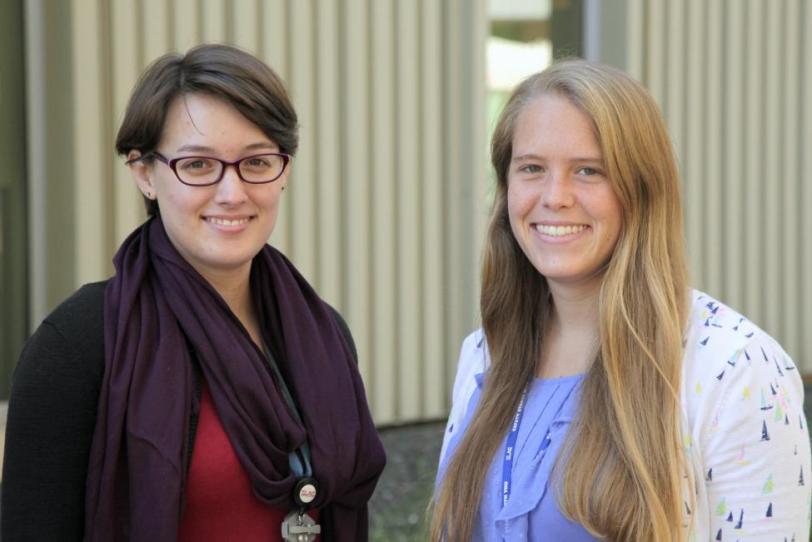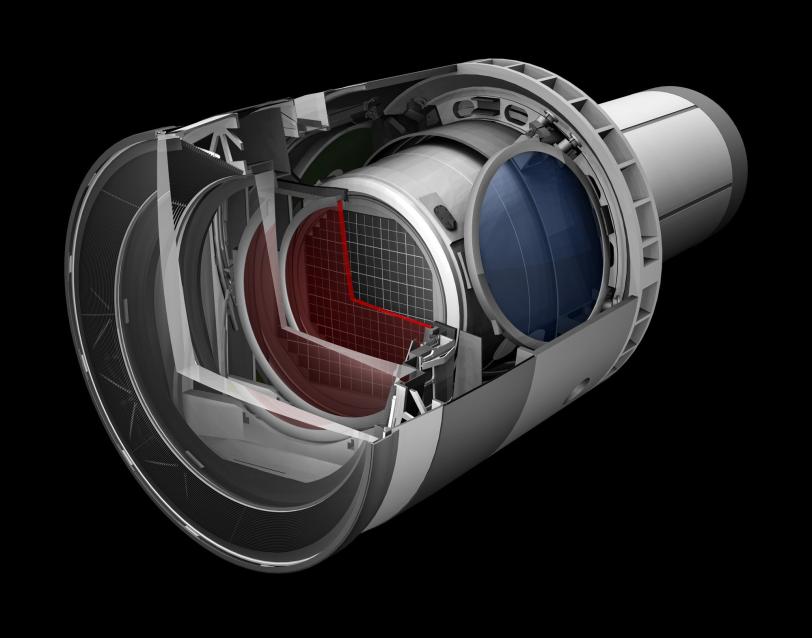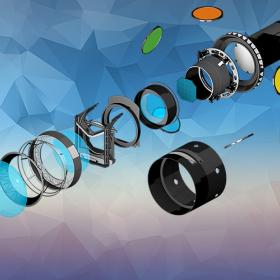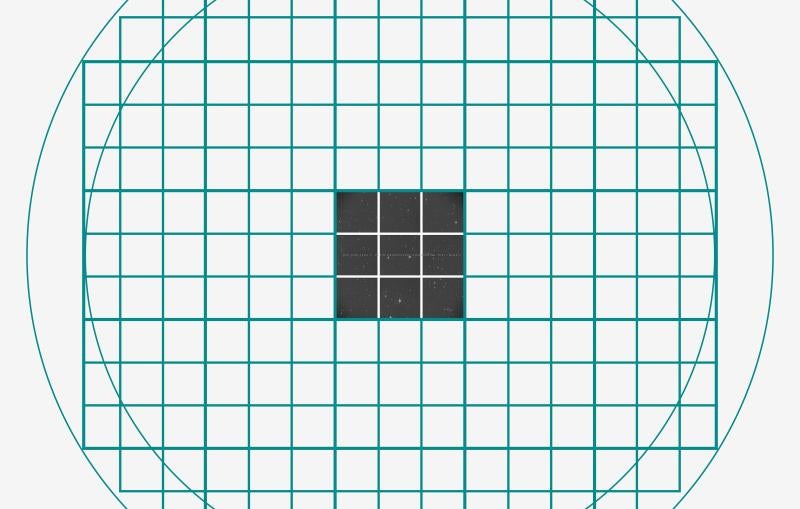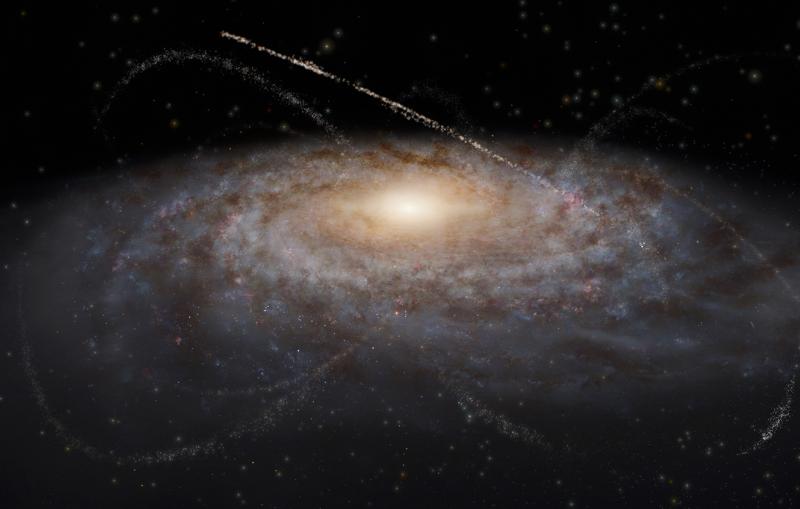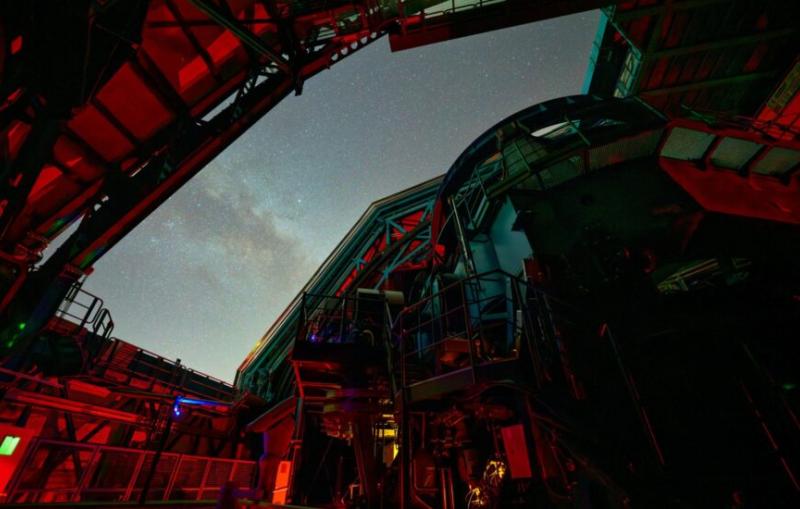Q&A: Diane Hascall and Margaux Lopez Help Build the World’s Largest Digital Camera
When the Large Synoptic Survey Telescope (LSST) begins in 2022 to take images of the entire southern night sky over and over again for 10 years, it will produce deeper, wider and faster views of the cosmos than any other telescope before. Its data will create unprecedented research opportunities that could help answer fundamental questions about the evolution of the universe, the formation of galaxies like our Milky Way, the nature of mysterious dark matter and dark energy, and more.
SLAC is leading the construction of the telescope’s 3,200-megapixel camera, whose components are being built by a large international collaboration of universities and research labs. The size of a small car and weighing more than 3 tons, the digital camera will be the largest and most powerful ever built – an ultra-sensitive “cosmic eye” that will see more galaxies than there are people on Earth and produce movies of the changing night sky in unparalleled detail.
SLAC completes construction of the largest digital camera ever built for astronomy
Once set in place atop a telescope in Chile, the 3,200-megapixel LSST Camera will help researchers better understand dark matter, dark energy and other mysteries of our universe.
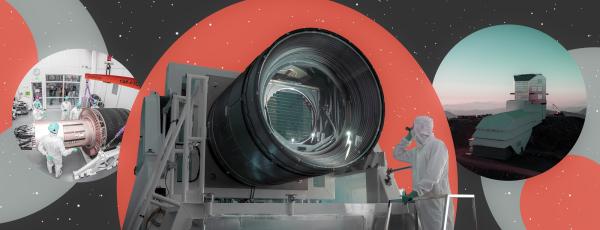
Over the next five years, the large-scale imaging device will be put together and tested in a new clean room at SLAC. The task will be handled by the lab’s growing LSST camera team, which along the way will also train its youngest members in developing and building groundbreaking new technologies.
In this Q&A, junior team members Diane Hascall and Margaux Lopez share their excitement about working on the camera project. Hascall came to SLAC in December 2014 after completing a bachelor’s degree in mechanical engineering at the University of California, Davis. Lopez received a bachelor’s degree in mechanical engineering from the California Institute of Technology and joined the project in October 2015.
What do you work on at SLAC?
Hascall: I work on the cryostat for the LSST camera – a refrigeration system that Rafe Schindler’s team is developing. To perform optimally, the camera’s image sensors, or CCDs, need to be very cold with very few temperature fluctuations. Our system will allow us to keep the temperature almost constant at minus 130 degrees Celsius. I do a little bit of everything for this project: I run the cooling system, perform tests and maintenance tasks, work on the system documentation and also do a bit of design work.
Lopez: I work with Tim Bond on the Integration and Test team. The camera and cryostat will be assembled in SLAC’s new clean room, where we’ll put the pieces together and test the performance of the camera system. I’m currently designing and building the fixtures that will hold the camera in place as well as allow us to rotate and roll it around during the assembly and testing process.
What excites you about this work?
Hascall: Simply being part of the LSST project is great. We’re building the largest CCD camera in the world, and completing this task will be a big accomplishment. But that’s only the beginning because with LSST we’ll be able to learn so much about space and see the universe in more detail than ever before.
Lopez: Another exciting fact is that not only scientists will benefit from our work because all of the telescope’s data will be available to the public. Kids could, for example, watch supernovae in action when they are in school. This will have a profound impact on them and on science education in general. I also wanted to become an astronaut when I was little, so in a way working on this project allows me to connect back to my childhood.
How has your experience at the lab been so far?
Lopez: Although I’ve only been here for a very short time, I’m already impressed with the team aspect of my work. We have a really great and cohesive team, and I really appreciated how supportive everyone was in bringing me up to speed on the project.
Hascall: It’s really fun to work at SLAC. Everyone here is very smart, and I’m learning so much by working with the team and other people. I also like how the SLAC environment is somewhat in between the academic and corporate worlds. It’s definitely very different from college in that projects are much more in flux and can expand or take different directions more frequently and much faster.
How did you find out you wanted to become an engineer?
Lopez: I have an older brother who is a software engineer. When we were kids, we would build entire LEGO worlds together. In school, I was on several science teams and always enjoyed math and physics, which eventually led to studying mechanical engineering. In college, I also taught creative robotics to kids and led several summer robotics camps. It’s a lot of fun to design and build things, solve technical problems, and see your designs come to life.
Hascall: I’ve also always liked math and science. Since I was a kid, it fascinated me that you can solve so many problems with engineering. It teaches you how things work and how to get them to work. In college, I first couldn’t decide which type of engineering I liked best and flip-flopped between computer and mechanical engineering for a while. I realized, though, that I really like working with hardware.
What do you like to do when you aren’t working on the world’s largest camera?
Hascall: I draw, read, work out and also love playing board and card games.
Lopez: I go climbing very often, outside and in the gym. I also enjoy playing soccer at SLAC during lunch breaks.
